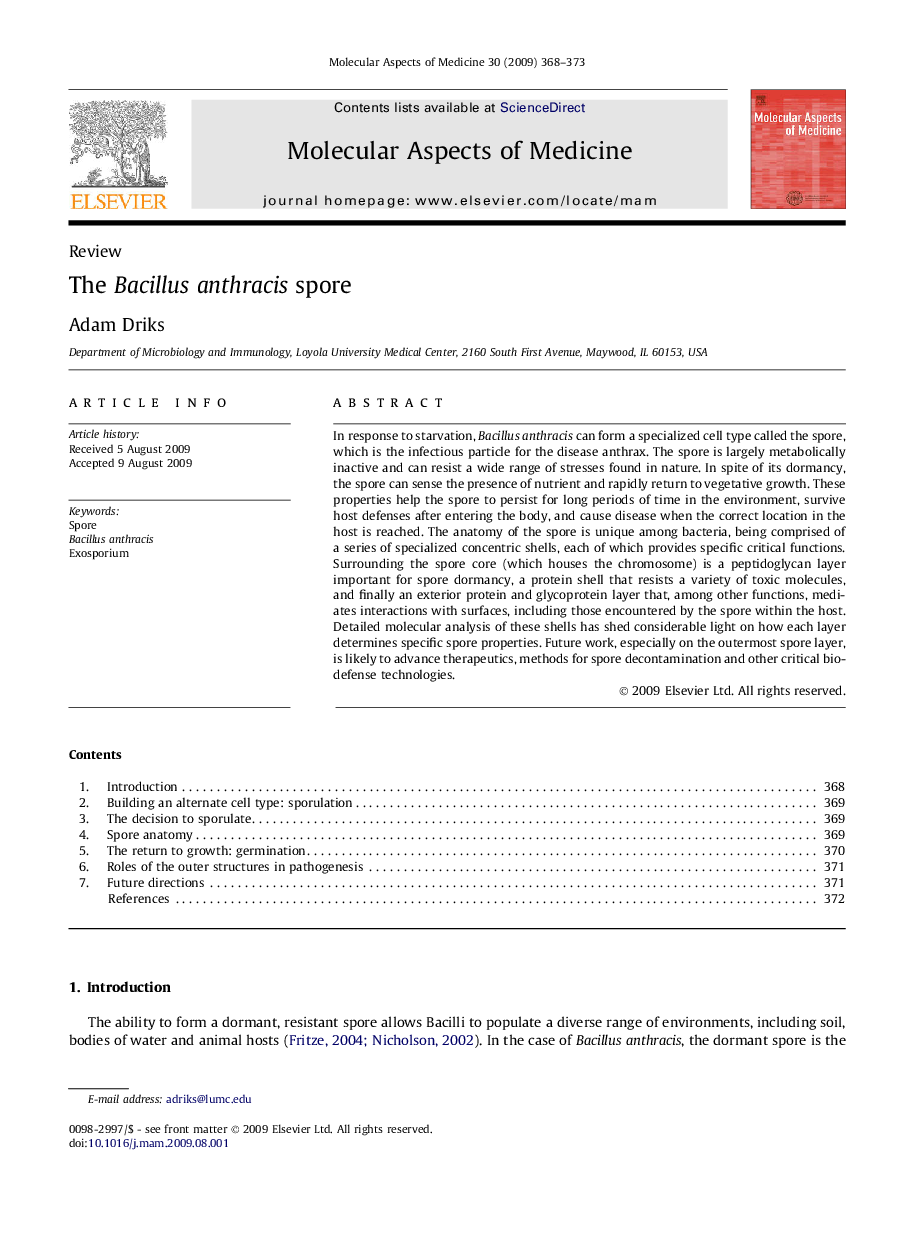| Article ID | Journal | Published Year | Pages | File Type |
|---|---|---|---|---|
| 1995743 | Molecular Aspects of Medicine | 2009 | 6 Pages |
In response to starvation, Bacillus anthracis can form a specialized cell type called the spore, which is the infectious particle for the disease anthrax. The spore is largely metabolically inactive and can resist a wide range of stresses found in nature. In spite of its dormancy, the spore can sense the presence of nutrient and rapidly return to vegetative growth. These properties help the spore to persist for long periods of time in the environment, survive host defenses after entering the body, and cause disease when the correct location in the host is reached. The anatomy of the spore is unique among bacteria, being comprised of a series of specialized concentric shells, each of which provides specific critical functions. Surrounding the spore core (which houses the chromosome) is a peptidoglycan layer important for spore dormancy, a protein shell that resists a variety of toxic molecules, and finally an exterior protein and glycoprotein layer that, among other functions, mediates interactions with surfaces, including those encountered by the spore within the host. Detailed molecular analysis of these shells has shed considerable light on how each layer determines specific spore properties. Future work, especially on the outermost spore layer, is likely to advance therapeutics, methods for spore decontamination and other critical biodefense technologies.
